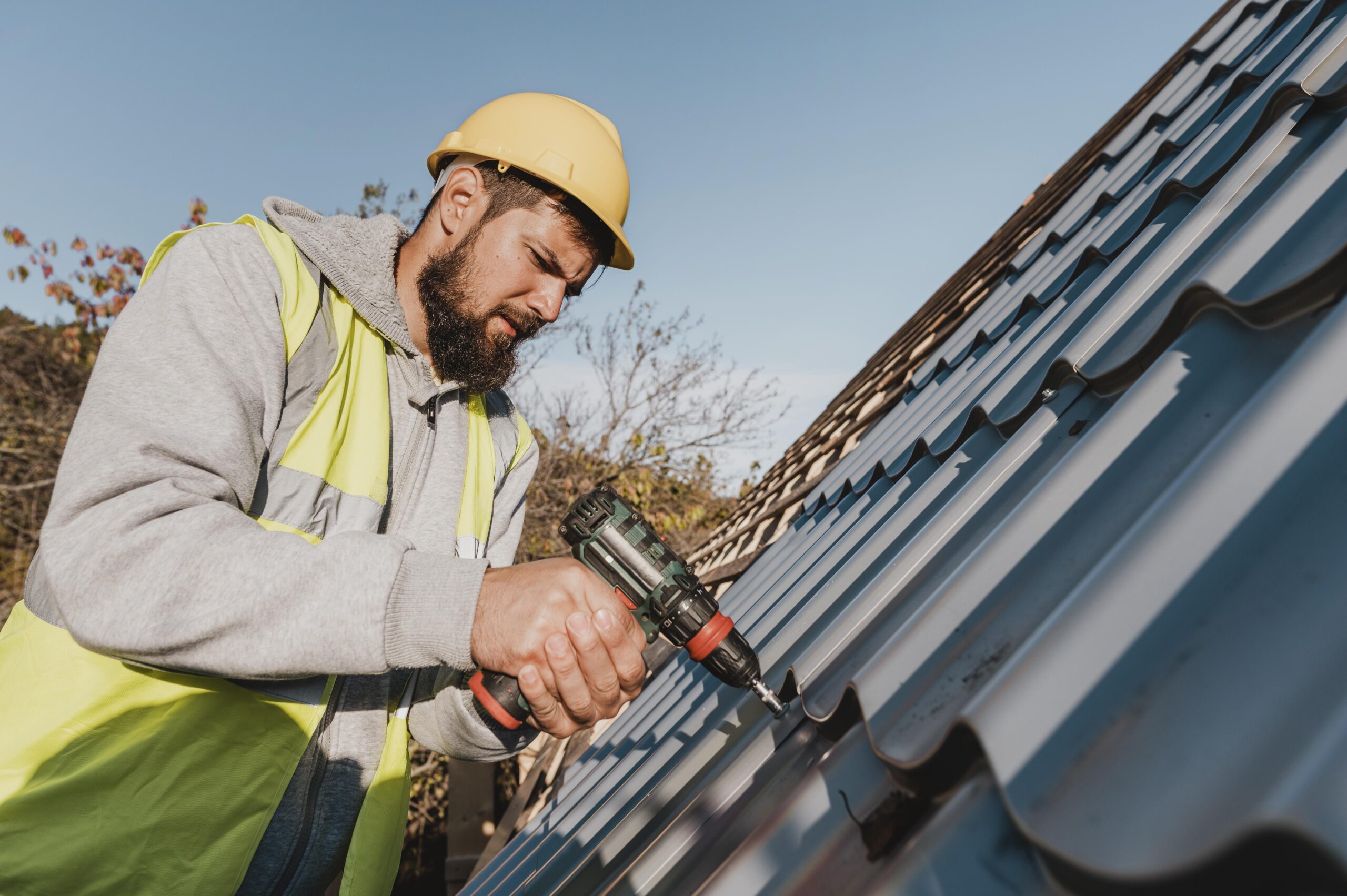You’ve noticed a leak. Or maybe your shingles are curling. Whatever the sign, one question starts to take shape in every homeowner’s mind: Should I repair my roof or replace it altogether?
This isn’t just a cost issue—it’s a decision that impacts your home’s long-term health. Jumping to one conclusion or the other without proper evaluation can lead to wasted money or avoidable damage.
Let’s walk through the steps that can help you make the most informed, confident choice for your roof.
Step 1: Identify the Problem
Start with a thorough visual inspection from the ground. Look for:
- Missing, cracked, or curled shingles
- Water stains on ceilings or attic boards
- Sagging sections of the roofline
- Debris buildup in gutters (especially granules)
- Visible light coming through the attic
If you’re not sure what you’re seeing, take photos and contact a roofing company. Professional inspection will confirm whether these signs point to isolated damage or widespread deterioration.
Step 2: Consider the Roof’s Age
How old is your roof? This is one of the biggest indicators of which route to take.
- Under 10 years old: Roof repair is likely sufficient if the issue is localized.
- 10–20 years old: Repair may still work, but your roof is nearing its expected lifespan depending on material quality.
- Over 20 years old: You’re likely better off planning for roof replacement, especially if damage is recurring or visible across multiple areas.
Even if your roof “looks okay,” materials can lose integrity with age. Underlying layers may no longer provide reliable moisture protection.
Step 3: Examine the Extent of the Damage
Next, determine whether the issue is cosmetic, structural, or systemic:
- Cosmetic: A few cracked or missing shingles? That’s surface-level, and roof repair is the right solution.
- Structural: Decking is soft, leaks are frequent, or multiple areas show wear? This leans toward roof replacement.
- Systemic: If ventilation, flashing, insulation, and shingles are all failing together, it’s not just one problem—it’s the whole system.
Professional roof repair services in Western North Carolina can provide a full report, helping you separate minor concerns from major red flags.
Step 4: Factor in Weather History
If your area recently experienced a major storm, hail, or high winds, your roof might be suffering hidden damage.
Wind can loosen shingles without tearing them off, and hail can bruise underlayment layers beneath intact surfaces. These issues may not be obvious until months later.
If this is the case, a full inspection is critical—and in some instances, your insurance policy may help cover replacement if storm damage is verified.
Step 5: Think About Long-Term Costs
Here’s where the math matters.
Let’s say you’ve spent $600 in repairs three times in the last two years. That’s $1,800—without addressing the root issue. Now consider that a full roof replacement, while more expensive upfront, may come with a 20–30 year lifespan and fewer ongoing costs.
Also, frequent repairs may not carry warranties. Roof replacement often does.
If you’re spending money on repeat roof repair with no long-term solution, it may be time to put those funds toward a more permanent fix.
Step 6: Evaluate Energy Efficiency
Your roof plays a significant role in home energy use. Poor insulation, cracked seals, or sun-damaged shingles can increase heating and cooling bills without you noticing.
New roofing systems—especially those installed by experienced teams like Ridge Runner Roofing—are built with reflective surfaces, better underlayment, and proper ventilation. These features can help reduce your utility costs year-round.
So even if your current roof is “working,” it may be costing you more in ways you haven’t yet measured.
Step 7: Review Your Timeline and Budget
Sometimes, the final decision isn’t about damage—it’s about timing and planning.
- If you’re planning to sell your home soon, a roof replacement can add resale value and buyer confidence.
- If your budget is tight but the damage is minimal, a repair might be more practical for the moment.
- If your roof’s condition is borderline, a financing plan or phased replacement may be available through your contractor.
Remember, good roofing companies work with homeowners to create realistic, phased approaches if full replacement isn’t immediately feasible.
Step 8: Weigh the Disruption
Roof repairs typically take a few hours. Roof replacements, on the other hand, can take 1–3 days depending on size and complexity.
If your family or pets are sensitive to noise or activity, or if you work from home, this may influence your decision. However, most roofing companies work quickly and cleanly, minimizing disruption.
And since many replacements come with updated insulation and ventilation systems, the temporary inconvenience is often offset by long-term comfort.
Step 9: Get Multiple Opinions
Don’t base your decision on a single quote. Talk to at least two or three companies, ask for itemized estimates, and compare warranties.
Look for:
- Clear explanation of materials and scope
- License and insurance proof
- Online reviews and references
- Timeline estimates and cleanup plans
Whether you’re leaning toward repair or replacement, transparency is key. The right contractor will help you understand your options—without pressure.
Conclusion: Informed Decisions Lead to Stronger Homes
Roof repair and roof replacement aren’t just construction terms—they’re financial and emotional decisions tied to your home’s protection. There’s no one-size-fits-all answer, but when you follow a thoughtful process, the right choice becomes clear.
From timely fixes to full-scale installations, trust the guidance of professionals who prioritize your home’s future. Ridge Runner Roofing has helped countless homeowners navigate this choice—and with the right approach, they can help you make the right call, too.









